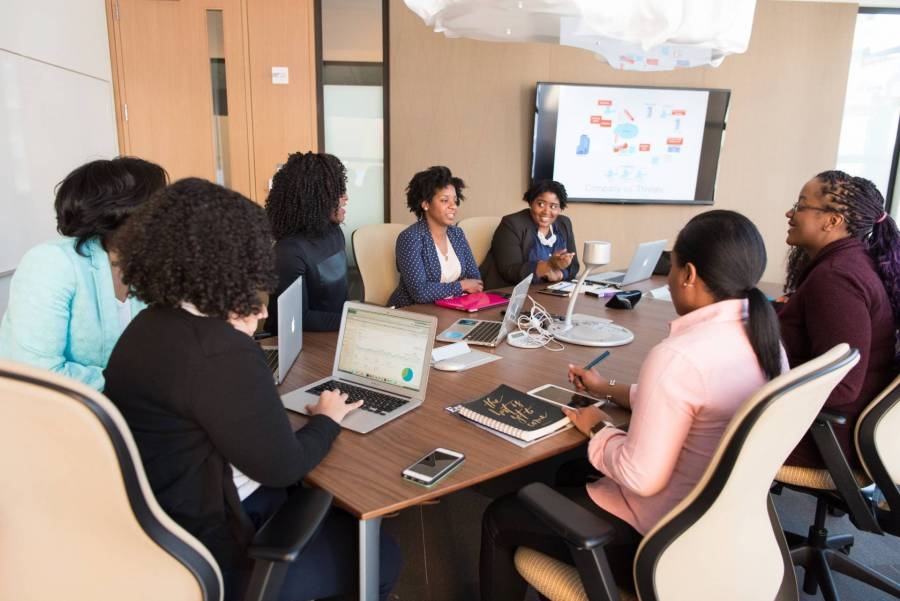Why Productivity and Customer Experience go Hand-in-Hand
Why Productivity and Customer Experience go Hand-in-Hand

Many large companies approach improving customer experiences from the perspective of customer support solutions, user experience design, and account management. Focusing on delighting customers is vitally important. Businesses could benefit from looking at customer experience through the lens of productivity. Here is why productivity and customer experience go hand-in-hand.
Improving customer experience is a kind of productivity tool all its own.
The bottom line is when you think about agile and efficient business solutions, customer experience needs to be included.

Customer experiences are a key differentiator in today’s business.
What is the customer experience?
Let’s start with the basics. To understand the relationship between customer experience and productivity, you should know what customer experience is and how to prioritize the customer in your organization.
Good customer experience takes into account the entire lifecycle of your prospect and customer.
The prospect lifecycle includes the first encounter and awareness stage, through to consideration, decision, and after-sale interactions. Think of the customer experience this way: creating positive customer experiences means that your prospects and customers trust your company.
Your clients and customers have good feelings about your brand and products and services (even if things go wrong).
These are the very individuals who will likely recommend you to others — and grow your business.
To create these remarkable customer experiences:
- You should actively be putting them first in your priorities.
- Following up with them to ensure they are satisfied with their purchase,
- Sending personalized messages.
- Tailor content that helps to address some of their questions or problems.
- Simply expressing your appreciation for them.
What is the difference between customer experience and customer service?
While they are similar, customer experience and customer service are not to be confused. They are both likely important in your organization. Differentiate experience and service in a fairly simple way.
Customer service is likely a reactive mechanism to help customers troubleshoot issues.
- File complaints
- Provide feedback.
- Request returns, exchanges, and refunds.
On the other hand, customer experience is more proactive and constant.
If you have reliable products and services, you hopefully won’t need too many customer service activities. But you’ll need to have a reliable model of customer experience. When you carefully consider the customer, there may be less of a likelihood that your customers will be dissatisfied enough to require service. Consider how you, as a company can be most helpful and transparent and pleasant.
Your customer experience and customer service should also work in tandem. One of the most essential qualities of a successful business (and successful customer experience) is consistency.
Why is customer experience so relevant?
From a business perspective, customer experience is essential. Changing consumer expectations means that the demand for companies to provide quality and value isn’t enough. With competition across markets becoming tougher, companies have to be providing exceptional service and memorable experiences.
Repeat sales are accounting for a much bigger piece of the revenue pie. We need to provide the right kinds of customer experiences that generate loyalty and recurring business from our existing customers. Experiences provide the right motivation for your customers to spend much more over their lifetime, creating referral opportunities, and less cost less for an acquisition.

Customer experience efforts should be productive
How do customer experience and productivity work together in an office setting? The best customer experiences are not just the ones that are thorough, and high quality, but also that are appropriate in timing and efficiency.
If we aren’t servicing our customers within a timeframe that matches their expectations, we may lose them forever. Engagement and customer experience must be prioritized for you to deliver what your customers want and need in real-time.
Businesses should look to encourage customer experience implementation that is efficient and scalable. Efficient and scalable practices happen when you:
- Define how to prioritize the values of customer experience.
- Create an environment that enables an employee’s productivity.
- Think about what you want your customers to achieve.
- Give your team productivity tips can help.
- Implement the right values and workplace cultural environment.
- Underscore how being productive is essential for delivering the right experiences at the right time.
Enabling your employees to be productive can help the customer experience.
What is customer experience as it relates to productivity? With compelling customer experiences, your customers should feel as though you care about them and their needs over the needs of your business.
The customer should feel as though each interaction with you is a priority. You can continue trying to find the simplest ways to engage with them at the peril of your business. Your customers need to know that you value finding the but the best and most effective methods.
Activities you implement for customer experiences need to be based on productivity and maximizing the time you have to deliver the options. You can include things like demos and tutorials, troubleshooting and issue de-escalation, and account management.
Let’s take a hypothetical scenario in which an employee at a SaaS company is assisting a customer. This customer is becoming frustrated with understanding the full capabilities of the product. They just want to start using it as soon as possible. This situation is where customer onboarding can help.
Customer onboarding can become a vital part of your business.
How do you get a customer up and running as quickly as possible? How do you give excellent service without sacrificing the quality of service? What protocols do you have in place when your clients or customers are becoming impatient? Saying, “calm down” is not the correct training for your employees.
You need to equip your teams with the right tools (and values) for productivity. Establishing actual processes and protocols for specific circumstances is the best foundation for ensuring consistency in your organization for customer experiences. Consider how-to encourage your employees to be solutions-oriented and problem-solving machines, on a case-by-case basis.
Experiences require effort.
Creating memorable customer experiences often has a lot to do with personalization and a human touch. The problem is, an inability often limits this for customer support, sales teams, or account managers, to be efficient. By focusing on the productivity of your staff, they can better prioritize and address customer needs.
Look to see what can be automated. Where in the process, can your staff focus less on internal tasks and administration? How will you provide employees with more time and energy to devote to outward-facing activities?
Have systems in place that help to identify and alert employees to impending problems.
- Train employees how to use usage data reporting and contract management systems.
- Teach all employees to work as a team and assist in upsells and renewals.
- Have interactive customer engagement tools.
- Encourage all employees, managers, and admins about promptness and efficiency.
What do you want to help your customers achieve?
Almost all of today’s companies are striving to improve customer’s lives in some way. A lot of companies are in the actual business of productivity. Even if you may not deem yourself a “productivity tool,” it’s likely that you aim to help private consumers. You want enterprise customers to achieve a goal in a better, more efficient way.
Are you a solutions-oriented organization?
“What do we want to help our customers achieve?” This question should be a driving force for everything you do in your company. When you are thinking about productivity from the standpoint of not just doing more in less time for profitability, but in doing more in less time to service customers, then you have a winning mindset.
If you can be more productive for the sake of customer experience, you’re more likely to help your customer productivity. Customers who feel that you make their lives better and more efficient will be more likely to become loyalists and generate referral sales.
Using customer experience solutions to improve business productivity.
On the flip side, you can think of excellent customer experience as a productivity hack. Why is customer experience so crucial for your business? When you see customer experience as an integral piece of your company and all that you do, it can encourage employee engagement and better performance overall.
Good customer experiences are productivity hacks for your business because they can then make certain parts of the business run more efficiently. In some cases, this might be a chicken or the egg scenario.
It’s important to note that in modern business, trustworthy and effective business practices cannot exist without creating great customer experiences, and vice versa.
Better customer experience for more productive sales.
Modern sales are changing, in that more focus is being placed on after-sales customer experiences, creating loyalty, and securing repeat business. We now know that allocating resources towards existing customers has a much better return on investment than solely pursuing new sales.
When looking to be more scalable, and to truly harness sustainable growth, all businesses need to be prioritizing those who are already customers, rather than ignoring them for only chasing new markets and opportunities.
In this way, customer experience becomes a productivity tool for sales. Because if we put some effort into creating those significant interactions with those who have already purchased from us, we can be more likely to generate recurring revenue from them. This alleviates the pressure, and also the effort that is required to secure sales.
On the other hand, creating great customer experiences (some of which can be automated) also frees up time and resources for sales teams to be seeking out new opportunities. With the right infrastructure in place for customers to feel confident in your business, and satisfied with all the interactions they have with you, the less hard selling and convincing a salesperson will need to do for upsells or renewals.
For both recurring sales and new sales, focusing on customer experiences can make your efforts much more productive.
Businesses are often looking to improve and streamline internal processes to increase profitability, employee satisfaction, and customer retention. When the company itself is a mess, there is a lack of standardization or importance placed on values and creating the right internal environment for employee engagement.
It doesn’t matter how good your product or business model is – you won’t succeed if you have a faulty business model of standardization. Consider why engagement drives the customer experience. When both customers and employees are actively invested together, that is the conditions necessary for creating support, positive sentiment, understanding, and great service.
Think proactively about what you’ll do to achieve a high-quality customer experience.
By placing emphasis on the customer experience throughout their entire lifecycle, it’s more likely that you will be able to run your business productively. Running your business productively comes down to priorities. For companies who prioritize profits over people, it becomes obvious very quickly.
For companies who prioritize high ranking leaders and executives over the majority of their employees, it becomes obvious very quickly. But for companies who prioritize delivering quality and service to customers as a standard for their business, this also becomes obvious very quickly.
Customer needs are key.
When customer needs are the driving force for all that you and your company do, it will allow you to be more aligned in a way that is most efficient and effective for achieving and fulfilling those needs. When employees feel engaged and positive about what they are doing (such as being helpful and providing value to others), they are more likely to be highly satisfied in their roles. These issues translate to greater employee productivity.
Productivity and customer experience shouldn’t be viewed as separate issues. Ineffective, scalable business, productivity affects the quality and timeliness of customer experiences, and the value of customer experience can affect your business’s productivity.
When you start to view these elements as having a close relationship and see how they affect one another, you can especially begin to understand why customer experience is so important. You can also be more productive in your customer experience delivery by digitizing some processes with tools like CloudApp.
With better collaboration, interactive experiences, and customer engagement capabilities, your teams can be both productive, and excellent in customer experiences.
Delivering positive customer experiences can be something in which success is based on timeliness and productivity. But also, solid customer experience development within your organization can actually help your business to be more productive.
The post Why Productivity and Customer Experience go Hand-in-Hand appeared first on ReadWrite.
(29)


